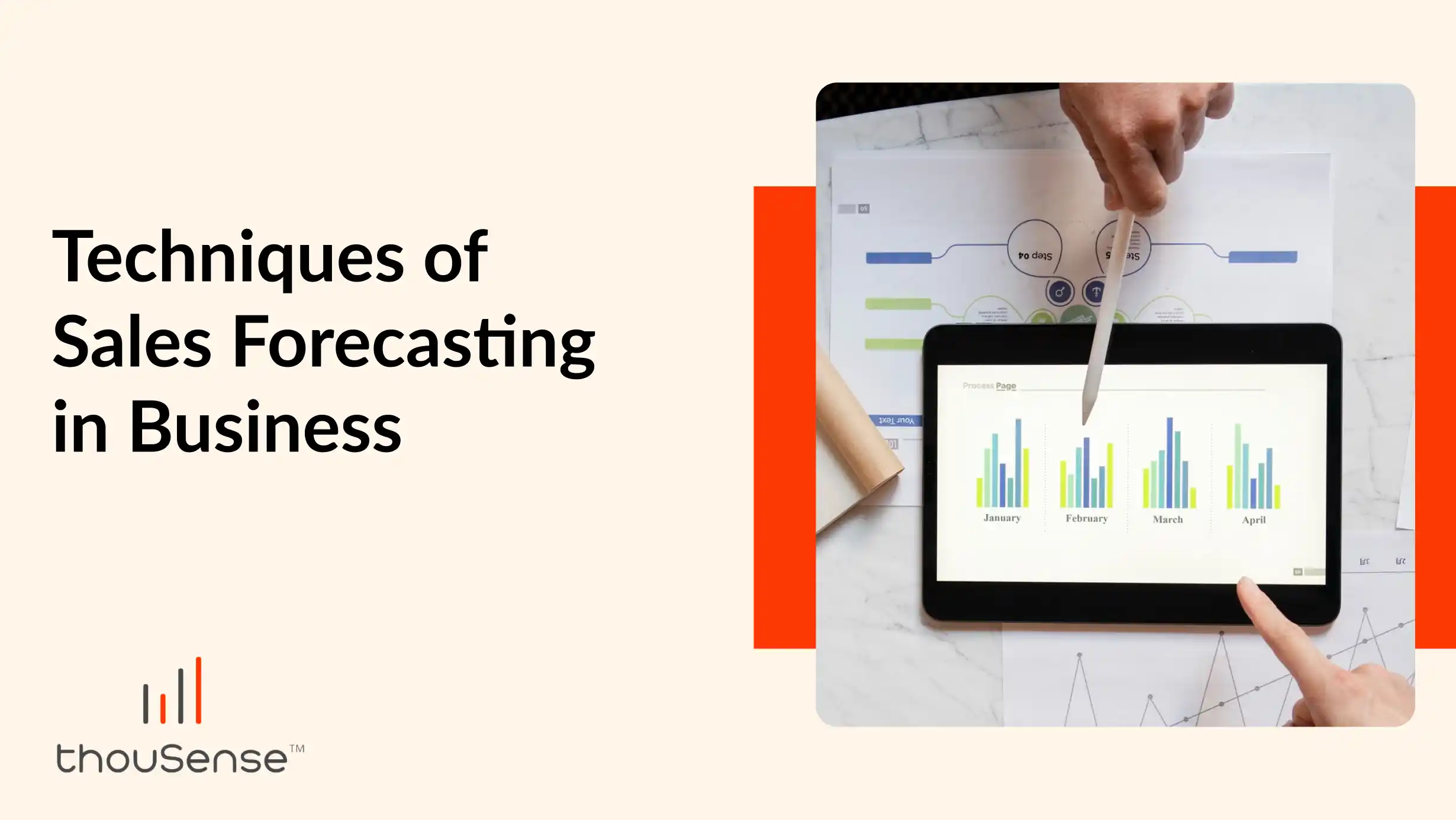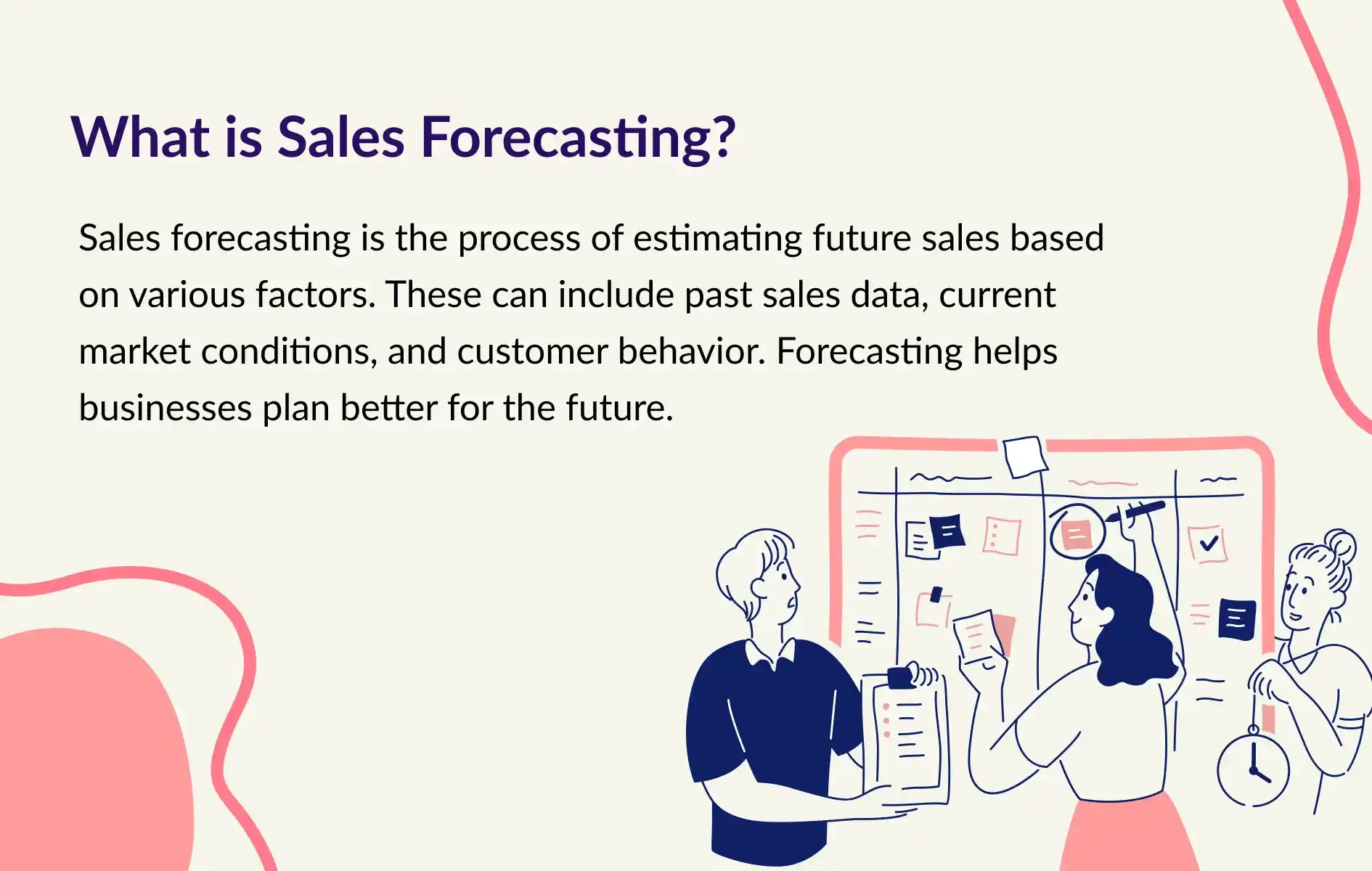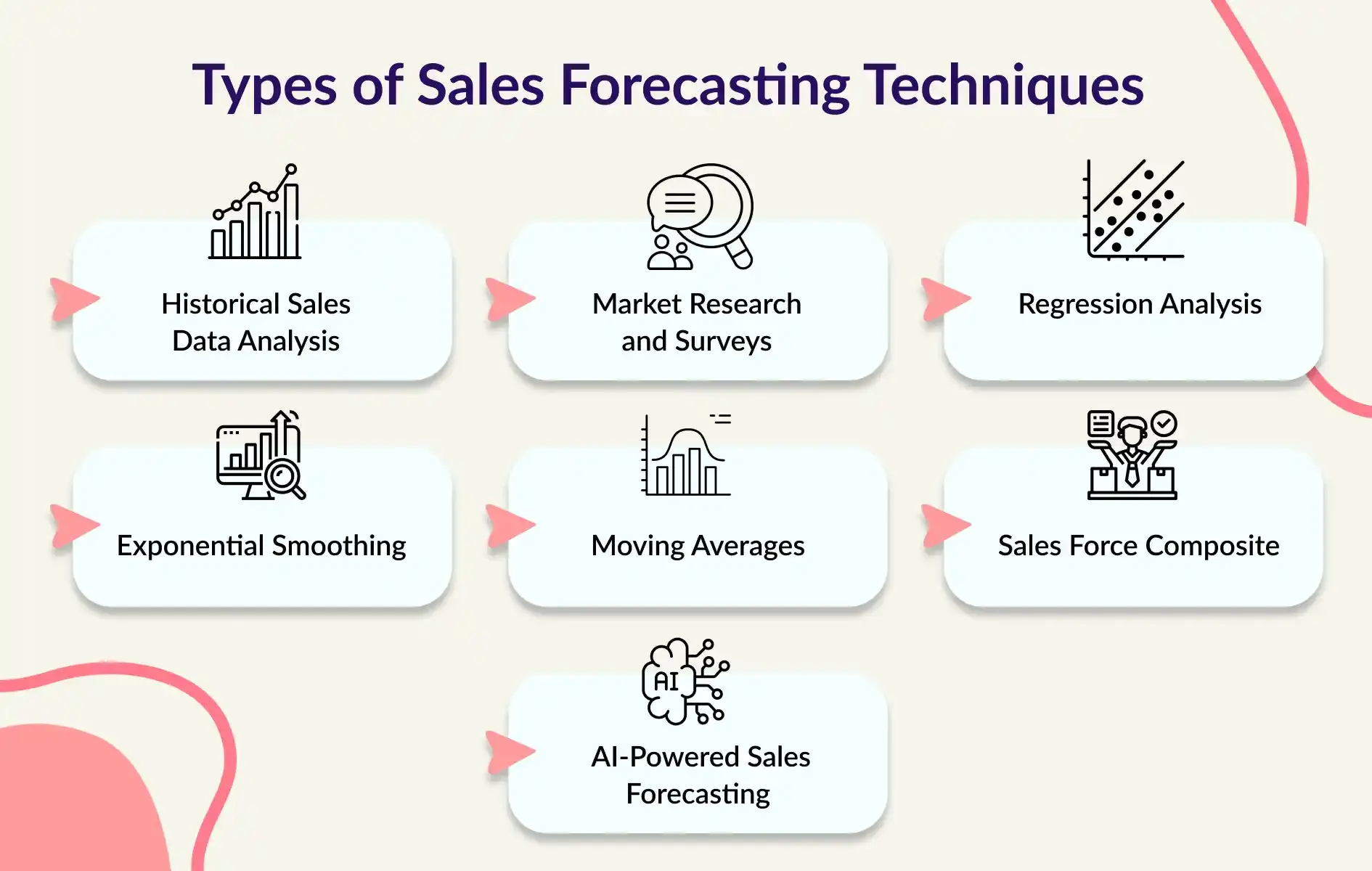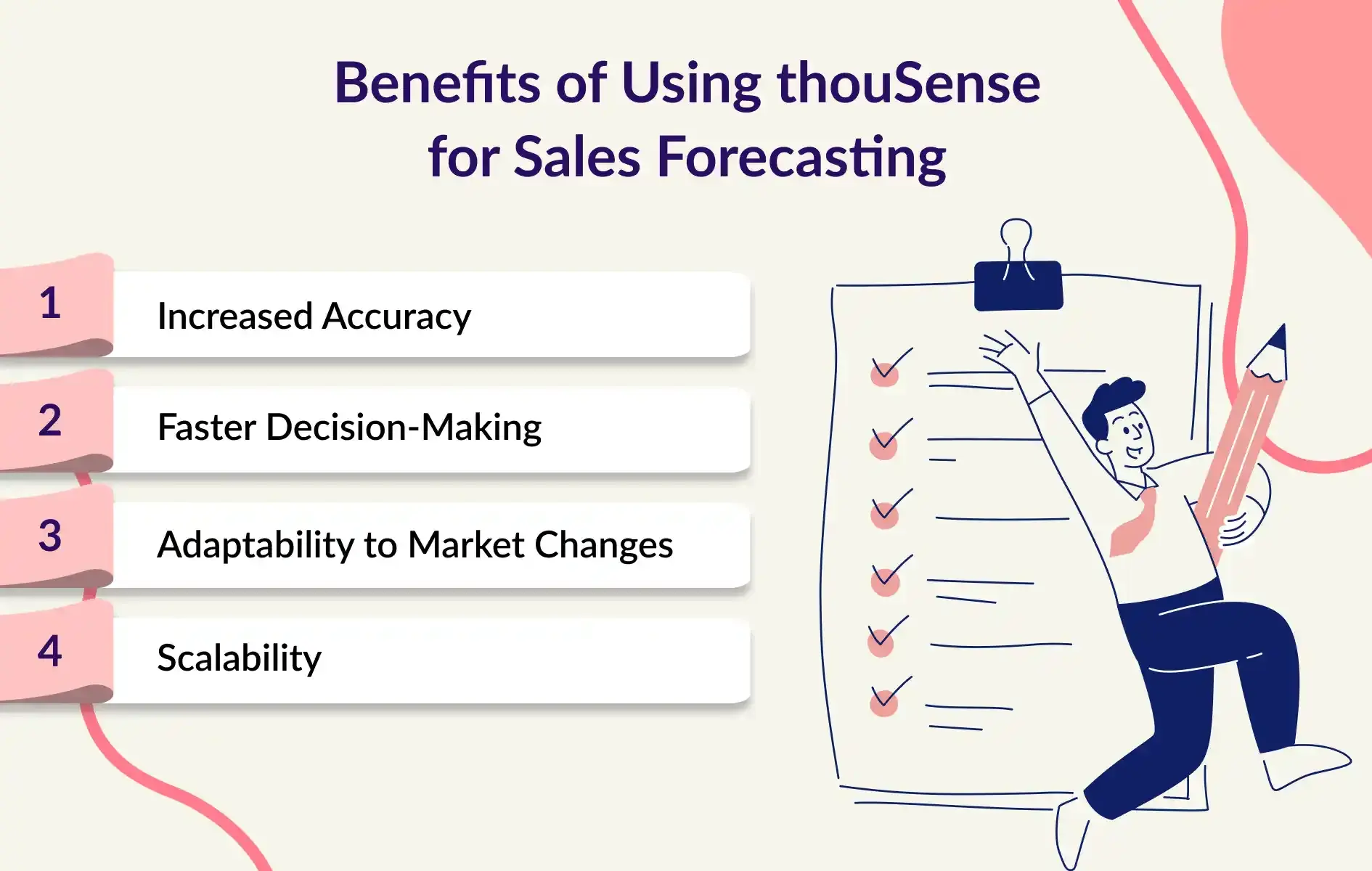Techniques of Sales Forecasting in Business

Sales forecasting is an essential process for every business. It helps companies predict future sales based on historical data, market trends, and other influencing factors. Accurate forecasting enables businesses to make informed decisions, plan their inventory, and allocate resources efficiently. In this blog, we will explore the most effective techniques of sales forecasting that businesses can use. Additionally, we will discuss how AI-powered tools like thouSense can enhance sales forecasting accuracy.
What is Sales Forecasting?

Sales forecasting is the process of estimating future sales based on various factors. These can include past sales data, current market conditions, and customer behavior. Forecasting helps businesses plan better for the future. It enables them to manage inventory, hire staff, and set sales targets. Without accurate forecasting, businesses can either overestimate or underestimate future demand, leading to losses.
Importance of Sales Forecasting in Business
Sales forecasting is crucial for many reasons. First, it helps businesses predict revenue and manage cash flow. Secondly, accurate sales forecasting helps companies plan their production schedules. It ensures that products are available when customers need them. Finally, forecasting supports strategic planning by providing a clear idea of future performance. Tools like thouSense make sales forecasting easier and more accurate by using AI technology.
Types of Sales Forecasting Techniques
There are several techniques businesses can use for sales forecasting. Each technique has its own advantages, depending on the nature of the business and the data available. Here are some of the most popular sales forecasting techniques:

1. Historical Sales Data Analysis
One of the most common sales forecasting techniques is analyzing historical sales data. Businesses look at past sales trends to estimate future performance. This technique works well for companies that have a consistent sales pattern. For example, if a business sees an increase in sales every December due to holiday shopping, it can use that data to forecast future December sales.
However, historical sales data analysis has its limitations. It assumes that future sales will follow the same pattern as past sales, which may not always be the case. External factors like market changes or new competitors can impact future sales.
2. Market Research and Surveys
Another useful sales forecasting technique is market research. Businesses can conduct surveys to gather information about consumer preferences and purchasing behavior. This technique helps companies understand market demand and forecast future sales accordingly.
Market research is particularly useful when launching a new product. By understanding customer preferences, businesses can estimate how well the product will perform. Although market research can provide valuable insights, it can be time-consuming and costly.
3. Regression Analysis
Regression analysis is a more advanced sales forecasting technique that uses mathematical models. Businesses use regression analysis to examine the relationship between sales and other variables, such as price, advertising, or economic conditions.
For example, a company might analyze how changes in price affect sales volume. This data can predict future sales using different pricing strategies. Regression analysis can provide accurate sales forecasts, but it requires access to detailed data and expertise in data analysis.
4. Exponential Smoothing
Exponential smoothing is a statistical sales forecasting method that assigns more weight to recent sales data. This technique assumes that recent sales trends are more relevant to predicting future sales. It is particularly useful for businesses with fluctuating sales patterns.
For example, if a business has seen a significant rise in sales over the past few months, exponential smoothing can give more importance to this recent data to forecast future sales. It helps businesses adjust their sales forecasts based on the latest trends.
5. Moving Averages
Moving averages is another statistical sales forecasting technique. It calculates the average sales over a specific time period. By smoothing out short-term fluctuations, moving averages provide a clearer picture of the sales trend.
Businesses often use moving averages when their sales data has seasonal fluctuations. This method helps them eliminate the effects of seasonal variations and focus on the overall sales trend. However, moving averages may not be suitable for predicting sudden changes in the market.
6. Sales Force Composite
In the sales force composite method, businesses gather sales forecasts from their sales teams. Since salespeople are directly in contact with customers, they can provide valuable insights into future sales. This technique combines the expertise of the sales team with other forecasting methods.
Sales force composite works well for companies with a large sales team. However, it relies heavily on the judgment of individual salespeople, which can sometimes lead to biased forecasts.
7. AI-Powered Sales Forecasting
One of the most modern techniques in sales forecasting is the use of AI-powered tools like thouSense. AI-based forecasting tools analyze vast amounts of data quickly and accurately. They can identify patterns and trends that human analysts might miss.
thouSense is a powerful AI tool that helps businesses forecast sales with high precision. It uses advanced algorithms to analyze historical sales data, market trends, and customer behavior. By using AI, thouSense can provide real-time sales forecasts, enabling businesses to react quickly to market changes.
The biggest advantage of AI-powered sales forecasting is its ability to process large data sets. It can analyze data from multiple sources, such as sales reports, market data, and customer feedback, resulting in more accurate forecasts than traditional methods.
Benefits of Using thouSense for Sales Forecasting
thouSense offers several benefits when it comes to sales forecasting:

1. Increased Accuracy
AI-powered tools like thouSense offer more accurate sales forecasts by analyzing a large volume of data in real-time. It reduces the chances of human error and provides businesses with reliable predictions.
2. Faster Decision-Making
With real-time data processing, thouSense helps businesses make faster decisions. Companies can adjust their strategies based on the latest sales forecasts without delays.
3. Adaptability to Market Changes
thouSense can adapt to changes in the market by analyzing current trends. It helps businesses stay ahead of their competitors by forecasting how market shifts will impact future sales.
4. Scalability
Whether a business is small or large, thouSense can scale to meet its sales forecasting needs. The tool can handle data from a wide range of industries, making it suitable for various types of businesses.
How to Choose the Right Sales Forecasting Technique
Choosing the right sales forecasting technique depends on the nature of the business, the data available, and the industry. For small businesses with limited data, simpler methods like historical sales analysis or market research may be enough. Larger businesses with access to more data may benefit from advanced techniques like regression analysis or AI-powered tools like thouSense.
Conclusion
Sales forecasting is essential for businesses to plan and make informed decisions. By using the right sales forecasting techniques, companies can predict future sales, manage their resources efficiently, and stay competitive. Techniques such as historical data analysis, regression analysis, and AI-powered tools like thouSense offer different benefits depending on the business’s needs.
In today’s fast-paced business world, using AI-powered tools can provide businesses with a competitive edge. thouSense’s ability to analyze large volumes of data quickly and accurately makes it a valuable asset for any company looking to improve its forecasting accuracy. By integrating thouSense into their sales forecasting strategy, businesses can make better decisions, respond to market changes faster, and ensure long-term success.
FAQs
1. What is the purpose of sales forecasting?
The purpose of sales forecasting is to estimate future sales, helping businesses make informed decisions, manage inventory, and allocate resources effectively.
2. What are the methods of sales forecasting?
Common methods of sales forecasting include historical data analysis, market research, regression analysis, moving averages, and AI-powered tools like thouSense.
3. Why is sales forecasting important in business?
Sales forecasting is important because it allows businesses to predict revenue, manage cash flow, plan inventory, and set realistic sales targets.
4. What factors influence sales forecasting?
Factors influencing sales forecasting include past sales trends, market conditions, customer behavior, pricing, and external economic factors.
5. How can AI improve sales forecasting?
AI improves sales forecasting by analyzing large data sets in real-time, providing more accurate predictions, and identifying trends that may not be visible with traditional methods.